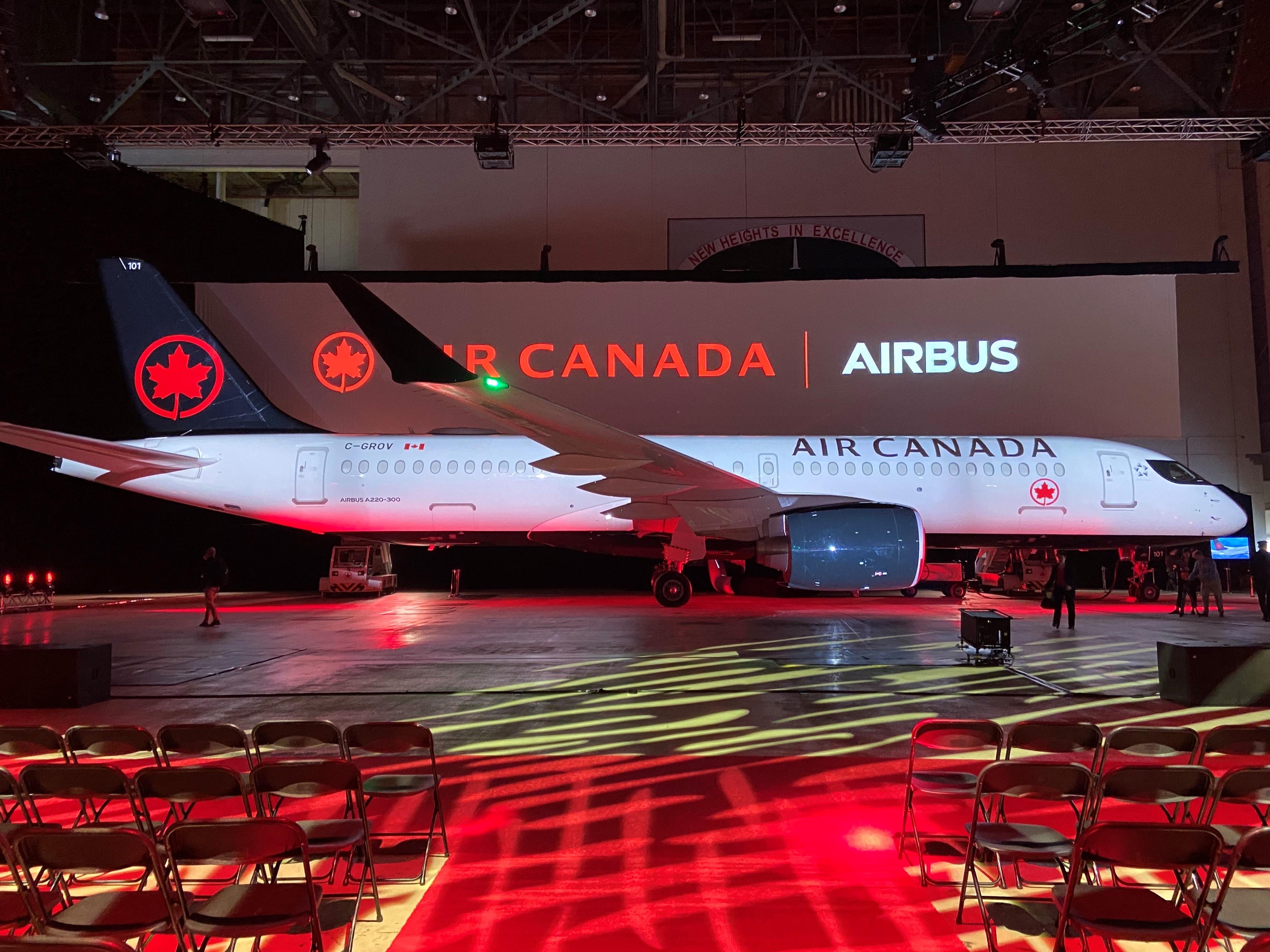
MONTREAL—Air Canada unveiled its first Airbus A220-300 to reporters at the company’s headquarters in Montreal Jan. 15.
The 137-seat narrowbody is the first of 45 A220-300s the Canadian flag carrier expects to receive through 2022.
Manufactured by Airbus Canada (previously Bombardier) at its facility in Mirabel, Quebec, the former Bombardier CS300 is a major component of Air Canada’s fleet modernization plan, which will see the Montreal-based carrier retire its fleet of Embraer E190s in favor of the newer, more fuel-efficient A220.
“The A220 represents the transformation Air Canada has undergone and the innovative culture we’ve developed,” Air Canada president and CEO Calin Rovinescu said in remarks at the company’s headquarters Jan. 15. “Over the past 10 years, we’ve undertaken a renewal of our entire mainline fleet, spending more than $12 billion. It began by accumulating state-of-the-art widebody aircraft. The arrival of the A220 represents the next phase of narrow-body renewal for our fleet.”
Air Canada became the first North American airline to place a firm order for the former C Series when it finalized a letter of intent for 45 CS300s in June 2016, with options for 30 more, at a list price of $3.89 billion. That order paved the way for other large North American carriers including Delta Air Lines and JetBlue Airways to place firm orders for the C series, helping to shore up the program at a time of financial difficulties for Bombardier.
Air Canada’s A220 will officially enter into commercial service Jan. 16, when it will make its maiden commercial flight between Montreal and Calgary. As Air Canada takes delivery of more A220s, the narrowbody will be initially deployed from Montreal and Toronto on existing Canadian and transborder routes, including to Calgary, Edmonton, Ottawa, Winnipeg and New York LaGuardia Airport.
The first new A220 routes are scheduled to begin May 4, with the introduction of Montreal-Seattle and Toronto-San Jose service, the only nonstop service between those city pairs.
“The A220 will allow Air Canada to further strengthen our position on transborder and transcontinental markets and be instrumental in our continued growth,” Air Canada VP-network planning Mark Galardo said. Air Canada will be the first North American carrier to operate the larger A220-300 variant, which has a range of 3,200 nautical miles, compared to 2,950 nm for the smaller A220-100. The airline will fly the A220 in a 137-seat, two-class layout, with 12 business class seats in a 2x2 configuration and 125 economy seats in a 3x2 layout.
While Air Canada plans to use the A220 to retire its fleet of 14 E190s—with an average fleet age of 14 years—those plans may have to be put on hold temporarily while the carrier’s fleet of 24 Boeing MAX 8 aircraft remains grounded. Air Canada currently has orders in place for 26 more MAX 8s and 11 MAX 9s, which are intended to replace some of its older A320-family aircraft.





